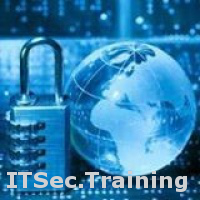 InfoSec Education
Information Security courses, training, consultants
InfoSec Education
Information Security courses, training, consultants
KU - Graduate Certificate in Information Security
-
Est. Price6182USD
-
Link
Today’s businesses rely on information, such as personnel details, client lists, marketing information, and more, stored entirely on network databases.
Because hackers could infiltrate a network if a firewall shuts down for even a minute, information security, including protecting databases with a range of policies, products, technologies, and procedures, is more important than ever.
Prepare for Certification
With this graduate certificate, you may be eligible to take the Certified Ethical Hacking certification exam.†
Graduate Certificate in Information Security Program Highlights
The online Graduate Certificate in Information Security’s curriculum provides you with the opportunity to:
- Study to acquire the knowledge, skills, and confidence to help you advance in the IT field.*
- Explore network operating systems, network security, threat detection and response methods, disaster recovery planning, cryptography, and information security and risk management.
Total Certificate Requirements Credits: 16
Total Program Credits: 16
- IT 540: MANAGEMENT OF INFORMATION SECURITY
IT professionals must focus on a wide range of security-related issues and develop security systems that address constantly changing threats. This course takes the approach that security components and business functions work in tandem. Topics like asset identification, human factors, compliance with regulations, personnel security, risk assessment, and ethical considerations are covered, as well as computer and network security tools and methods.
Credits:
4
Prerequisites Required:
IT 530
- IT 541: COMPUTER AND NETWORK SECURITY
In today's world, protection of data is serious business. This course explains the concepts and techniques involved in keeping computers and networks secure. The course examines fundamentals such as viruses, worms, and other malicious software; authentication and encryption security; file security and shared resources; firewalls and border security; and physical and network topology security.
Credits:
4
Prerequisites Required:
IT 540
- IT 542: ETHICAL HACKING AND NETWORK DEFENSE
An ethical hacker is a security expert who attacks a system on behalf of the system's owners. This course focuses on discovering network vulnerabilities that a malicious hacker can exploit. The course explores penetration testing, footprinting and social engineering, scanning and enumeration, operating system weaknesses, and the methods used to hack Web servers and wireless networks. You will perform hands-on projects using state-of-art hacking tools and techniques.
Credits:
4
Prerequisites Required:
IT 541
- IT 543: CRYPTOGRAPHY CONCEPTS AND TECHNIQUES
Never before has the use of cryptography been so wide spread or so necessary. In this course, you will learn how to protect susceptible networks from attack by implementing encryption techniques. You will examine encryption algorithms, substitution and transposition, block ciphers versus stream ciphers, public key cryptography, hash functions, digital signatures, and authentication protocols. The course offers hands-on projects using modern cryptographic tools.
Credits:
4
Prerequisites Required:
None
-
Related Organization
